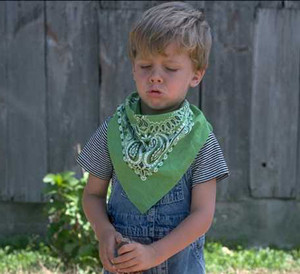 It feels good to be needed but it also feels good to be needed a little bit less and have a more independent child. It is possible for a young child to learn how to self soothe! Before going over some self soothing techniques, I will be discussing how to recognize that your child is in need of self soothing, signs of stress/anxiety, identifying triggers and learning what is causing them, and modeling for your child some things to do and helping them do some as well. At times, before a child can self soothe s/he needs to be taught how to self soothe. Have you ever had the thought “Oh gosh, I didn’t want you to learn that!” Your child notices what you say and do.
It feels good to be needed but it also feels good to be needed a little bit less and have a more independent child. It is possible for a young child to learn how to self soothe! Before going over some self soothing techniques, I will be discussing how to recognize that your child is in need of self soothing, signs of stress/anxiety, identifying triggers and learning what is causing them, and modeling for your child some things to do and helping them do some as well. At times, before a child can self soothe s/he needs to be taught how to self soothe. Have you ever had the thought “Oh gosh, I didn’t want you to learn that!” Your child notices what you say and do.
When Self Soothing is Needed…Signs of Anxiety
A child will give indicators that s/he is in need of self soothing prior to those moments of major distress. There may be a change of temperature so this could look like your child sweating when it is not hot or saying they need a blanket when it is not cold. Your child may be looking around (avoiding eye contact), having a hard time concentrating, have a racing heart and have a shortness of breathe, tense neck muscles, and/or fidgeting. Your child may be irritable, have diarrhea or use the restroom often, be fatigued, and/or have insomnia. Your child may complain of stomachaches or headaches. When a child is complaining of a stomachache/ headache, or any of the other symptoms frequently, your child may be telling you that their anxiety is at a constant high level.
Identifying Triggers and What Causes Them
When anxiety continues to increase, the feeling can come out in many forms (one of the above or if very high then possibly as explosive behavior and excessive crying). When this occurs your child is often inconsolable. Whatever just happened, or was said, was a trigger for him/her and pushed their anxiety over the top and no longer have control over themselves. If it is inconsistent and seems random, the child’s anxiety can stay at a high level and any stress can tip them over. When at a constant high level, your child may benefit from professional help, (one modality is play therapy), to help process their feelings and build their tolerance for anxiety.
Modeling and Reflecting Understanding
We naturally reflect when we are excited or happy. It is the hard feelings that are difficult to reflect. Hard feelings such as frustration, anger, sadness. The next time you find yourself feeling a hard feeling:
- State the hard feeling .
- State the body sensation that told you what feeling you were having, (eyes looking around,
racing heart, tense neck). - Model a self soothing activity. Example- “I’m angry. My voice is getting louder. I’m going to take a few deep breathes.” Another example: “I’m frustrated. My neck is tensing up. I’m going to go in the other room and clean the dishes.” Be sure to say what you are feeling and not what you believe your child is feeling. Also choose an activity that will genuinely help you to feel more calm. This will help your child accept all of their feelings and to understand them more. A way to reflect understanding can look like: “I know you are angry.” “You’re disappointed we couldn’t stay longer.” As people we all want to feel heard and understood.
By modeling acceptance of your feelings, it will help your child become more comfortable with accepting their own feelings.
Self Soothing Techniques
There are many self soothing techniques that you can model, encourage your child to do by themselves, or do with your child. It is important to find techniques that you are comfortable with and help you when modeling. If a modeling technique does not work for you personally, it may not work for your child. I encourage you to choose two techniques to start with and build from there. Another option with modeling is to encourage your child to do the activity with you. A few techniques that are helpful include, but are not limited to, giving yourself a hug, hiding in between pillows, stretching, moving-walking, running, skipping, crawling, squeezing down your legs and arms, taking a few deep breathes, drinking cold water, listening to music, or cooking. A few that you can encourage and have your child do completely solo include, jumping on a trampoline, rocking in a chair, bouncing on a big ball, sucking a sucker, eating something crunchy, riding a riding toy, playing with play dough, or pushing/pulling/pressing/ or carrying something. The last technique of carrying something can be especially helpful when transitioning into a next activity. Being tucked in snuggly can be calming and help the person to relax as well. Your child will let you know what helps them and what does not. When you notice those signs of stress decreasing, his or her anxiety is lowering. Model recognition, acceptance, and patience with yourself and feelings and your child will learn to do the same.
